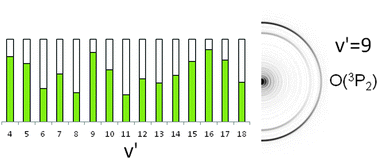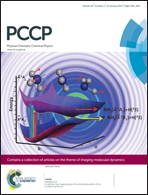Experimental and theoretical investigation of correlated fine structure branching ratios arising from state-selected predissociation of BrO (A2Π3/2)
Abstract
We present results for the v′-dependent predissociation dynamics of the BrO (A2Π3/2) state using velocity map ion imaging. Correlated fine structure branching ratios, Br(2PJ) + O(3PJ), have been measured for v′ = 5–16 states. The experimental branching ratios are non-statistical and strongly dependent on the initial vibronic state. The current measurements represent an extensive dataset containing rich information about the predissociation dynamics of this system and should provide a stringent test for modern theory. New high level ab initio excited state potentials are presented and have been optimized using experimental v′-dependent predissociation lifetimes and calculated coupling constants. Comparisons between the experimental branching ratios and the predictions based on diabatic and adiabatic limiting models are presented. We find that the adiabatic model is most consistent with the observed trends in the correlated branching ratios, in contrast to previous studies on the related ClO system.

- This article is part of the themed collection: Imaging molecular dynamics

 Please wait while we load your content...
Please wait while we load your content...